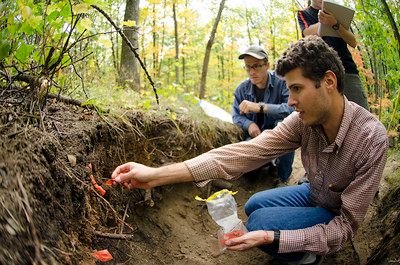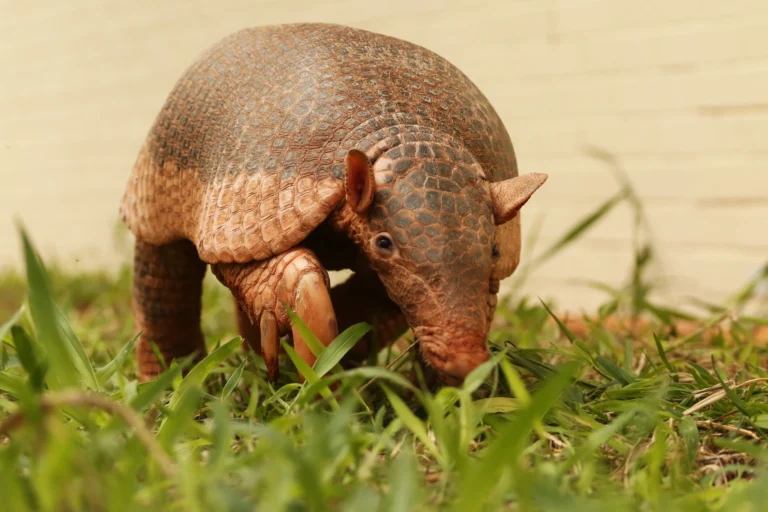Ozone Layer Depletion Meaning, Importance, Causes and Effects
Ozone Layer Depletion is the gradual thinning of the protective ozone layer in the Troposphere.
This article addresses the following concepts in relation to ozone layer depletion;
1). What is Ozone layer depletion?
2). Why is the Ozone layer Important?
3). What is the Ozone layer Composed of?
4) What happens if the Ozone layer is completely destroyed?
5). What are the Causes of Ozone layer depletion?
6). The Ozone Hole: Are there really any ‘Holes’ in the Ozone layer?
7). How can we measure Ozone layer depletion?
8). Effects of Ozone layer depletion
What is Ozone Layer Depletion?
Ozone layer depletion refers to the process by which the ozone layer of the upper atmosphere is gradually reduced.
The ozone layer is a region which occurs at about 15-30km above the surface of the entire Earth [1].
This region is also known as the Stratosphere which is the layer above the Troposphere, known to have stratified temperature characteristics. The Stratosphere generally has higher temperature as it extends upward, and this is as a result of its ability to absorb ultraviolet rays from the sun.
Why is the Ozone Layer Important?
The ozone layer is very important to life on Earth because it serves as an atmospheric shield, whose main function is to absorb the harmful portion of solar radiation, from the sun, thereby preventing it from reaching the Earth surface.
This harmful portion of the solar radiation is also known as Ultraviolet-B (UV-B) radiation, and it includes the portion of the electromagnetic spectrum that is less than 290 nanometers (wavelength of Ultraviolet-B radiation is between 280 and 315 nanometers in wavelength.

What is the Ozone layer composed of?
As the name implies, the Ozone layer is composed primarily of Ozone [2]. This is a tri-atomic gaseous molecule of Oxygen; meaning that it is made of three oxygen atoms. The gas occurs in the troposphere and stratosphere, and it may be produced in nature by the reaction of sunlight with oxygen O2.
It may also be produced by man-made processes, when greenhouse gases like nitrous oxides react with volatile organic compounds [3]. Ozone may be referred alternatively to, as Tri-oxygen, and it has the chemical formula; O3.
While Ozone gas (O3) constitutes up to 90% of the ozone layer, other gases like molecular oxygen (O2) are also part of the bulk of the ozone layer.
What Happens if the Ozone Layer is completely Destroyed?
The Ultraviolet-B rays in sunlight are highly energetic, and this has a number of negative implications.
Research has shown that UV-B radiation can lead to skin cancer, due to mutative reaction with the pigments of the skin. Prolonged exposure to solar rays can cause this problem to occur. Man-made Ultraviolet rays may also cause skin cancer on exposure.
The immune system may also be generally weakened by exposure to UV radiation. In such cases, the body becomes more prone to ailment.
Beyond the human populace, Ultraviolet radiation also affects the rest of the ecosystem. For example, the growth of plants may be severely stunted or retarded due to UV exposure.
In the aquatic ecosystem, organisms like fish, aquatic plants and planktons are not left out of these effects. This is because Ultraviolet rays are also capable of penetrating the aquatic zone to significant depths.
What are the Causes of Ozone Layer Depletion?
In general, Ozone layer depletion is caused by man-made chemical products.
However, it has been discovered that the main cause of Ozone layer depletion is a designated group of man-made chemical compounds known as Chlorofluorocarbons (CFCs).
Other chemical compounds that contribute to ozone layer depletion include Halons, Carbon tetrachloride, Methyl Chloroform, and hydrochlorofluorocarbons (HCFCs). Nitrous Oxides (which are greenhouse gases) may also deplete the ozone layer.
Sources of Chlorofluorocarbons
Chlorofluorocarbons can be derived from various man-made products. These include mainly volatile chemicals which may be in form of;
1). Propellants
2). Refrigerants
3). Aerosols
4). Solvents
Other products that may produce ozone-depleting gases include fire extinguishers and air-conditioners.
The ‘Ozone Hole’: Are there really any ‘Holes’ in the Ozone Layer?
The ozone hole is a term used to describe a segment of the ozone layer, where the level of depletion is significantly greater than the rest of the entire stratosphere (which is synonymous with the ozone layer)..
This means that there are no actual ‘holes’ or vacant sections of the ozone layer.
Where is the Ozone Hole? And when can it be observed?
The ozone hole, as it is called, occurs above the Antarctic region. It is seasonal in nature. The ozone hole can be observed mainly between August and October, annually. This is equivalent to spring in the Southern Hemisphere.
How can we Observe the Ozone Hole?
We can observe the ozone hole using satellite equipment. These can provide geospatial images of the changes in the ozone layer over time.
How can we Measure Ozone Depletion?
The thickness of the ozone layer is measured in Dobson Units. This is named after Gordon Dobson, who is credited for having developed the first Ozone measuring instrument in the early twentieth century.
What is a Dobson Unit and What does it Measure?
The Dobson unit can be defined simply as the thickness of a pure gaseous layer that would be formed by a column of gas at standard temperature and pressure conditions (STP). It is measured in tens of micrometers, meaning that 500 Dobson Units would equal approximately 5mm (i.e.; 500×10= 5000 micrometers) of pure gas at STP.
The depletion of the ozone layer became most evident in 1979, when measurements of less than 220 Dobson Units were first made. Ozone values below 220 Dobson Units were observed over the Antarctic region, and indicate catalyzed reactions of bromine and chlorine with the ozone molecules in the stratosphere.
This value (220 Dobson Units) has since been assigned as the threshold value of ozone depletion.
The Ozone hole was observed to reach a maximum measured depth on the 30th of September, 1979, at 194 Dobson Units. At this time, the ozone was confined to only a small region over the Antarctic Peninsula.
Periodic observations over the years have proved that the ozone hole is spreading its area of coverage, as we as its depth. Measurements in 2008 confirmed a thickness of only 100 Dobson Units (DU). An illustration is given below;

What is being done to Solve Ozone Layer Depletion?
International effort to check ozone depletion commenced with full effect in the 1980s. These efforts were mostly influenced by the observation of the ozone hole in 1979. A vivid example of such is the Montreal Protocol of 1989, which banned the manufacture of ozone depleting substances (ODS).
Some predictions have since been made regarding the future of the ozone layer. These predictions are based on simulations using the present and past conditions (history and trend) of the ozone.
In general, these predictions suggest that the stratospheric ozone depleting substances (ODS) will remain above minimum levels till the mid-twenty first century. This implies that the ozone hole will be regained substantially only by 2040-2050. It however leaves out the continuous depleting effects of human activities on the ozone layer in other parts of the world such as the Southern latitudes and tropical (equatorial) regions.
Why does Ozone layer Depletion Occur mainly above Antarctica? (and not above the Arctic?)
Global air currents or winds are responsible for the continuous stirring of atmospheric gases. Because gases from the earth are constantly rising into the atmosphere, this leads to the mixing of ozone depleting substances from the earth, with atmospheric gases.
In Antarctica, the meteorological and atmospheric conditions generally enhance the reactivity of the ozone depleting gases when they come in contact with atmospheric gases.
The Northern Hemisphere is the most concentrated region with respect to ozone depleting substance production including halons and chlorofluorocarbons.
These gaseous substances are mixed by air currents with the atmospheric gases in the troposphere. Due to their volatile nature, with time, the gases rise further, entering into the stratosphere. This is where the ozone depletion reaction occurs.
Although Antarctica occurs in the Southern Hemisphere, air currents cause the even-distribution of ozone depleting substances across the entire globe. Because of the extreme low temperature conditions that can be sustained in the Antarctic, the stratosphere over this region is usually very cold.
A type of cloud called the Polar Stratospheric Cloud is formed in the stratosphere above the Antarctic due to the prevalent low temperature. This cloud is composed primarily of water vapor which condensed at low temperature. The condensed water molecules and low temperature serve as catalysts that speed up and intensify ozone depletion reactions.
Basically, the polar stratospheric cloud affects ozone layer depletion by activating chlorine and bromine atoms that react rapidly afterward, when solar radiation intensifies in September and October [9].
This does not occur similarly above the Arctic. The reason is simply because low temperatures are not as persistent in the Arctic as they are in the Antarctic. Therefore, Polar Stratospheric Clouds do not form, and activation of ozone depleting substances is much less than in the Antarctic.
Mechanism of Ozone Layer Depletion: The Ozone Depletion Reaction
A rather complex series of reactions lead to the depletion of ozone in the atmosphere.
Firstly, ultraviolet radiation splits chlorofluorocarbons in the stratosphere, releasing chlorine atoms. This is the case for halons, hydrofluorocarbons and bromides as well. The splitting of the gaseous molecule is aided by the presence of a cloud which provides vaporized water molecules and a crystalline medium.
The released chlorine or bromine atoms rapidly react with ozone (O3) to produce oxochlorate and oxygen, as shown below;
Cl + O3 – ClO + O2 —(1)
Oxochlorate may then release the oxygen atom to become a free chlorine radical, that may react continuously with other ozone molecules.
2ClO – Cl2 + O2 —(2)
Through the repetition of this process, a single chlorine atom can destroy up to 100,000 ozone molecules before it leaves the upper stratosphere [3]
What are the Effects of Ozone Layer Depletion?
1). Effects on the Environment
Ozone layer depletion has profound effects on the environment. These effects may be physical, chemical, or biological. The primary effect is the change in the structure and composition of the atmosphere. Ozone depletion implies that the concentration of ozone in the atmosphere will be reduced, and other gaseous substances like chlorofluorocarbons will become a significant component of atmospheric gases.
The structure of the atmosphere will be changed as well, because the stratosphere (which lies above the troposphere) will thin out considerably.
The physical effects include a rise in temperature of the earth surface. This phenomenon is already occurring at an alarming rate, and is referred to as Global Warming.
2). Effects on Humans
The human population also experiences the effects of ozone layer depletion.
Because the depletion of the ozone layer leads to an increase in the level and intensity of ultraviolet-B radiation on Earth, these rays come in contact with humans.
Prolonged exposure to ultraviolet-B rays has been found to have a series of potential negative outcomes. These include;
” Skin Cancer
Exposure to ultraviolet-B radiation greatly increases the risk of skin cancer in humans. This is the case for all skin types, because UV-B rays reduce the immunity of the human system in general.
Three main types of skin cancer exist, which are the squamous cell carcinoma, basal cell carcinoma, and malignant melanoma.
Both non-melanoma and melanoma skin cancer categories can be caused by exposure to UV-B radiation, in some cases.
* Immune Deficiency Disorder
Because of the highly reactive and alterative tendencies of UV-B radiation, they can affect the immune system negatively. This will make the body more prone to infection and illness.
* Eye Cataracts
The ultraviolet rays from the sun, which are intensified due to ozone layer depletion, can affect the eye as well. This is possible for both humans and other animals [ 5]. On excessive exposure to ultraviolet-B radiation, different vital parts of the eye may be damaged. These include the cornea, the conjunctiva and the lens.
The lens of the eye may become clouded by cataracts due to exposure to UV-B radiation. This condition may lead to permanent blindness when severe.
3). Effects on the Ecosystem
When ozone layer depletion allows more ultraviolet radiation to reach the earth surface, this radiant energy permeates all biotic and abiotic systems on earth.
The aquatic and terrestrial terrains are both affected by ozone layer depletion and UV radiation. Because UV radiation has highly reactive and altering potentials, it is capable of limiting growth in plants by destroying plant cells. It may also alter the chemical composition and nutrient constitution of soil, thereby affecting soil organisms and vegetation alike [8].
The food chain is therefore altered as well. This is because the cycling of nutrients across the entire ecosystem, ultimately depends on plants.
Conclusion
The ozone layer can be depleted by ozone-depleting substances, as shown in this article.
References
1). Department of the Environment and Energy (2018). “The Ozone Layer”. https://www.environment.gov.au/protection/ozone/publications/ozone-layer-factsheet).
2). EPA (2021). “What is Ozone?“. Available at: https://www.epa.gov/ozone-pollution-and-your-patients-health/what-ozone. (Accessed 7 October 2021).
3). EPA (2021).“Basic Ozone Layer Science”. Available at: https://www.epa.gov/ozone-layer-protection/basic-ozone-layer-science. (Accessed 8 October 2021).
4). NASA.GOV (2008). “Polar Stratospheric Clouds”. Available at: https://www.nasa.gov/multimedia/imagegallery/image_feature_680.html. (Accessed 9 October 2021).
5). NASA Earth Observatory (2001). “Ultraviolet Radiation: How it Affects Life on Earth”. Available at: https://earthobservatory.nasa.gov/features/UVB/uvb_radiation2.php. (Accessed 8 October 2021).
6). NASA Earth Observatory (2021). “Antarctic Ozone Hole: 1979 to 2008”. Available at: https://earthobservatory.nasa.gov/images/38835/antarctic-ozone-hole-1979-to-2008. (Accessed 8 October 2021).
7). NASA Ozone Watch (2018). “What is a Dobson Unit?”. Available at: https://ozonewatch.gsfc.nasa.gov/facts/dobson_SH.html. (Accessed 8 October 2021).
8). Pavel F., Klement R., and Valerie V. (2014). Effect of Elevated CO2, O3, and UV Radiation on Soils. The Scientific World Journal. Available at: https://www.hindawi.com/journals/tswj/2014/730149/. (Accessed 9 October 2021).
9). Poole, L R; McCormick, M P; Solomon, S; Pitts, M C (1989). The interannual variability of polar stratospheric clouds and related parameters in Antarctica during September and October. Geophysical Research Letters: ISSN 0094-8276. Available at: https://www.osti.gov/biblio/5676489. (Accessed 9 October 2021).
10). Thangavel, S. and Reddy, S. K. (2011). Ozone Layer Depletion and Its Effects: A Review. International Journal of Environmental Science and Development 2:30-37. DOI:10.7763/IJESD.2011.V2.93. Available at: https://www.researchgate.net/publication/269838986_Ozone_Layer_Depletion_and_Its_Effects_A_Review/link/5b01497b0f7e9be94bd95dee/download. (Accessed 14 October 2021).
11). UCAR (2011). “The Troposphere”. Available at: https://scied.ucar.edu/learning-zone/atmosphere/troposphere. (Accessed 9 October 2021).
12). UNEP (2021). “The Montreal Protocol”. Available at: https://www.unep.org/ozonaction/who-we-are/about-montreal-protocol. (Accessed 8 October 2021).
13). Wassenhoven, L. (2006). “Ozone Hole History”. Available at: https://theozonehole.com/ozoneholehistory.htm. (Accessed 14 October 2021).



